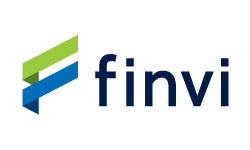Source: site
Finance & Banking
,
Fraud Management & Cybercrime
,
Fraud Risk Management
Synthetic Identities for Superprime Borrowers Generate 3 Times Higher Fraud Losses

Auto lenders operate on a simple principle – the higher a borrower’s credit score, the lower the risk. But new data from TransUnion reveals a troubling contradiction: Superprime borrowers – those with a credit score higher than 720 – are generating three times more fraud losses than subprime borrowers.
See Also: New Attacks. Skyrocketing Costs. The True Cost of a Security Breach.
The reason behind these losses? Fraudsters are using synthetic identities to exploit a massive blind spot in the lending industry’s defenses, according to an auto lending fraud report released Thursday by credit reporting agency TransUnion. TransUnion consumer data from 2023 found that the average superprime loss for auto loans was $53,796, compared to $16,015 for subprime loans.
The auto lenders typically allocate most of their fraud prevention resources to screening subprime applicants, while prime and superprime borrowers get low-touch approvals. But there’s been a sharp increase in fraudsters using synthetic identities to pose as “perfect borrowers” to achieve bigger payoffs, TransUnion said.
“Superprime synthetic identities often perpetrate bust-out fraud, so instead of just getting one car, they will get six to 10 cars in 30 days on the synthetic identity,” said Frank McKenna, chief fraud strategist with PointPredcitive. “This also drives the average loss much higher.”
These fraud trends have created an “inverted risk pyramid” at most lenders, which are still aiming their most sophisticated fraud prevention tools at the lowest-value transactions, while highest-exposure deals sail through with minimal scrutiny, McKenna said.
The economic incentives are clear for fraudsters: Taking out one auto loan for a $60,000 luxury vehicle is preferable to applying for 12 credit cards with $5,000 limits, and in recent years, the process of building a superprime synthetic identity has become industrialized.
Fraudsters on social media claim they can create five to 10 synthetic identities a week and then give them time to age for 18 to 24 months before using them. “Additionally, we are seeing more use of primary tradelines that are very high-limit tradelines that consumers buy and have them posted to their credit to boost their credit scores significantly,” McKenna said.
There are lots of legitimate primary tradelines that consumers can acquire online, but over the past year, some unscrupulous credit repair companies have shifted their focus to posting illegal tradelines that offer more score-boosting power than authorized tradelines.
On Telegram, aged credit privacy numbers – false nine-digit numbers used as a substitute for Social Security numbers to hide a poor credit history – are selling for $750 or more, compared to $80 to $100 for standard CPNs.
“The aging process is critical,” McKenna said. “A synthetic identity that’s two or three years old, with a carefully curated payment history on authorized user accounts and small tradelines, can achieve a superprime score. By the time they apply for a $60,000 luxury vehicle, nothing in their credit file looks suspicious.”
The major challenge lenders are facing is that traditional fraud detection models were trained to identify credit risk, not deception.
For example, a potential borrower in his mid-30s with a high credit score and a tradeline that is only two years old is something that traditional fraud models don’t flag. Other warning signs include the sudden appearance of high-limit primary tradelines with no prior relationship, the use of temporary VOIP phone numbers that have no historical association with the borrower and a complete absence of social media presence despite claims of being a business owner. These signals are visible during the application process but fraud models are built to look for negative credit history – not suspicious perfection.
Another problem is resource allocation mismatch. A typical auto lender focuses 70% of manual fraud review capacity on subprime applications, while superprime applications receive automated approval even if the loan amount is high.
TransUnion also pointed out that auto lending fraud differs from credit card fraud.
“Credit cards involve high-velocity, real-time online transactions, while auto loans are one-time, high-value transactions traditionally conducted in person,” a TransUnion spokesperson told ISMG. “As auto lending moves digital, this in-person identity verification layer is eroding, increasing synthetic identity fraud risk since fewer physical touchpoints make it harder to validate borrower authenticity.”
To identify high-risk applications, especially those in the super prime segment, lenders need additional fraud detection tools. “Overlaying fraud models, scores and behavioral attributes can help uncover various types of fraud early in the application process and enable proactive account monitoring,” the TransUnion spokesperson said.




